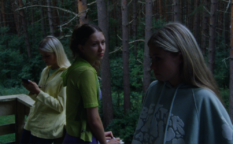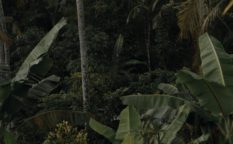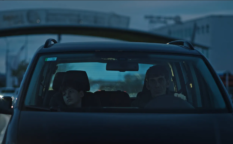Montserrat Cattaneo: “Volcanoes are like giant gods who can protect you or destroy you”

In her short drama The Heart of the Volcano Montserrat Cattaneo lets a daughter search help for her sick father from the mightiest of all forces in the area. She does it with unshaken determination, unimpressed even by the devil himself who briefly tries to convince her in hopelessness of her quest.
In her graduation short from the Film University Babelsberg Konrad Wolf, Cattaneo uses genre elements to bring the local beliefs of the people living on the Mexican mountain Popocatepetl closer to the viewer. It’s a love movie of a sort, with the director showing her great attachment to the area and its people.
The film had its European premiere at Ca’ Foscari Short Film Festival earlier this month where we watched it. That was also the motive to ask Cattaneo many questions about her fascinating project and the influences that made it what it is.
The idea for the script comes from you, but the story is penned by Gustavo Ambrosio Bonilla.
He is a friend of mine and a good writer. When I presented him the idea of this girl, her father and the volcano, we spoke a lot about it. He wrote a little draft, after which we started working on the script together. It was a collaborative work, but he wrote everything in the right order of the scenes.
Where does your fascination with volcanoes come from?
It’s because I am from Mexico City and we are surrounded by hundreds of volcanoes. They are quite present in our culture, and I often have them in my imagination.
I see volcanoes every time when I go to visit my dad. I approached the people who live nearby and they have lots of traditions and magic related to these giants of nature. They, for instance, claim to be talking to the volcanoes – even in their dreams, and I think that’s wonderful.
Probably all cultures around the world have some kind of relationship to the nature ‘gods’: mountains and volcanoes. And actually my name Montserrat means mountain.
Are the particular rituals shown in the film rooted in the culture and traditions of the region, or did you come up with your own interpretations?
It’s the mixture of both. It is important, if you are going to tell a story about your country and your people, to present it the best possible way. I took bits and pieces from everywhere, combining with depiction of real things happening around the volcanoes.
People are connected to the volcano because the lightning during the storm has very special powers. If it hits closeby, it brings the magic powers to the area which are communicated trough the force of nature. Weather around this area carries those powers. I took the myths and rites and I put them in the new universe with a bit of a fantasy context. I enjoy creating new realities by mixing the real- with the pretend world.
You actually summoned the devil in your film. Is he somehow connected to the volcano?
He is. Volcanoes are like giant gods who can protect you or destroy you. They can be terrifying and evil. Just look at what kind of impact volcanic eruption of Cumbre Vieja on the Spanish island of La Palma has. There is no end in sight. It has swallowed forests and thousands of houses as if they were nothing. So, volcanoes have two sides to their nature. They make the land very fertile, they make the Earth breathe, but they can erase you over night.
On which locations did the shooting take place?
We shot the film on the so called Estate of Mexico in the mountains of Popocatepetl, second biggest volcano in the country, and one of the most dangerous.
Could you tell us something about the casting process?
While I was writing the script, I had the lead actress Xochitl Galindres on my mind. The whole idea about that character: how she looks, how she moves came from my wish to work with her. She is a great stage actress who isn’t that famous, but I saw her in the theatre many times, and I loved the way she can express herself.
This is your directorial debut, but you are in the film business since a while.
Yes, that’s true. I was involved in a number of films, but mostly as the producer, still photographer or camera assistant. But now, I am working on my next film. I am actually writing the script for it, so we can start shooting next year.
Can you try to describe your film spoiler-free to our readers?
It is about how the power of nature can help us in terrible times. Maybe this is because we really believe in forces of nature in Mexico. We are listening to the clouds, to the wind and the storm. You could tell that the nature is sending us signals which can shows us the right path. So, that’s why the girl in my movie goes to the volcano to get her answers.
What was the thing dearest to your heart about this film?
It was a very special project because I invested my whole heart into it to tell a story about the connection between a girl and her father, and their mutual conenction to the nature. I met a cinematographer from Germany (Fee Strothmann) who wanted to make another film for her school, and at the end we had a great team. All my collaborators were wonderful. I guess that I love making movies because I enjoy being somewhere else, in a different world.
What was the most difficult part in making this film?
That was actually the location. When we were supposed to shoot the exterior scenes on the volcano, it became cloudy, misty and it started to rain. It was very complicated. We had an actor who was very old and since we were quite high up it wasn’t easy to procede we wanted to. Imagine going 3000m up, and performing your job there.
We were shooting for five days, and we also had to return and reshoot some scenes which we we couldn’t before due to the bad weather.
















